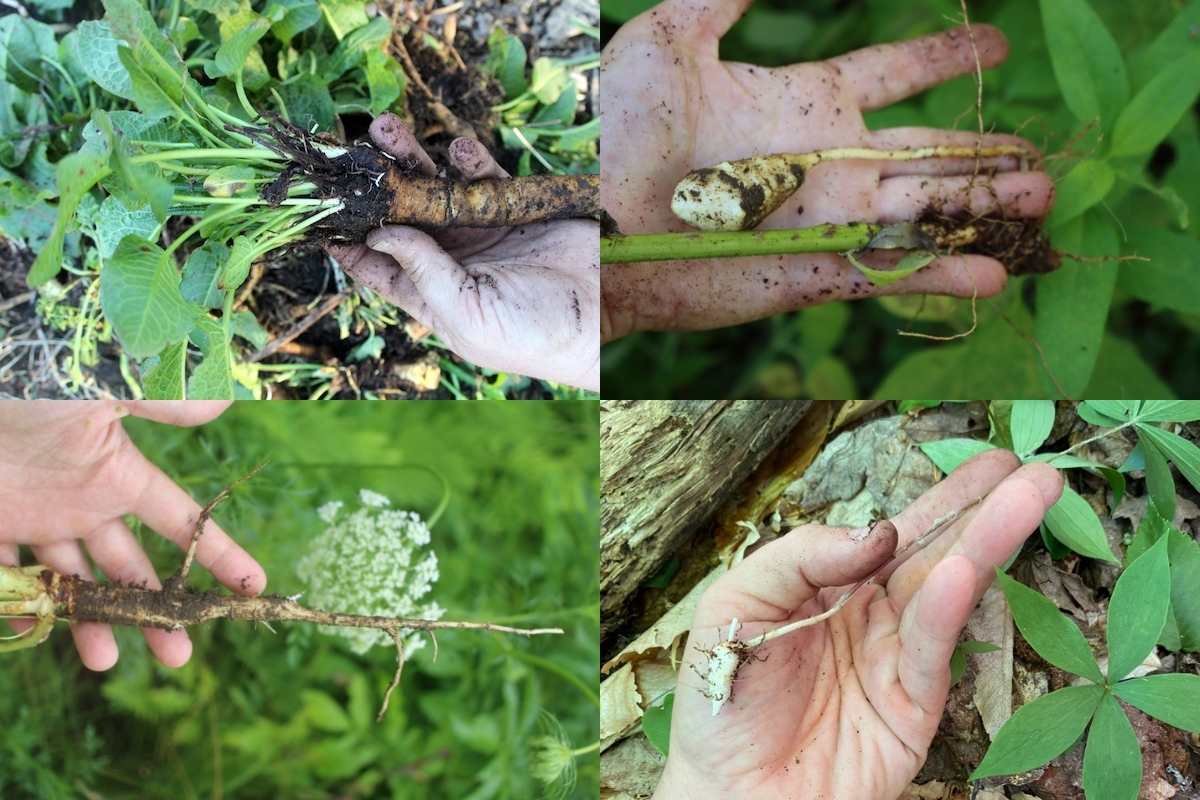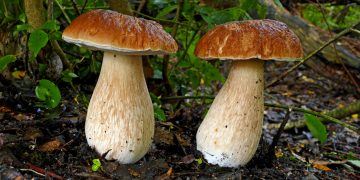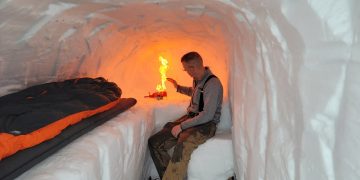When you’re out camping, it’s not just the weather, gear, or terrain that you need to be concerned about. Wildlife, particularly scavengers, can pose a significant challenge to your peace of mind and safety. Whether it’s raccoons, bears, or smaller animals like squirrels and chipmunks, scavengers are known to be opportunistic and persistent. As humans increasingly encroach upon natural habitats, the animals often become bolder in their search for food, sometimes even infiltrating campsites. But what if we told you that wild edibles—plants and natural food sources—could help prevent these animals from invading your camp? In this article, we’ll explore how wild edibles can act as a deterrent and whether this strategy is effective for keeping scavenger wildlife at bay.
Understanding Scavenger Wildlife
Before diving into wild edibles, it’s important to understand what draws scavenger animals to your campsite. Scavengers are creatures that primarily feed on dead or decaying organic matter, but they’ll take advantage of any accessible food source, whether it’s fresh or not. Common scavengers include:
- Bears: Black bears, grizzly bears, and other species are notorious for being attracted to campsites with food. They have an exceptional sense of smell and can track down food from miles away.
- Raccoons: Known for their dexterity and intelligence, raccoons can be a nuisance at campsites, as they often rummage through coolers, trash cans, and tents to find food.
- Coyotes: While they are not typically a danger to humans, coyotes will scavenge human food if it is left out unattended.
- Squirrels and chipmunks: These small, nimble creatures can be just as pesky when it comes to raiding food supplies.
The key to understanding how wild edibles may help prevent these animals from invading your camp lies in understanding their foraging behavior and the availability of natural food sources in the area. If wild edibles are abundant and easily accessible, they may be less inclined to approach human camps for food.
The Role of Wild Edibles
Wild edibles refer to plants, berries, fungi, and other natural food sources that can be found in the wild. These foods have been used by indigenous people for centuries as a source of nutrition, medicine, and even as a means to interact with the environment. In the context of camping, wild edibles can potentially play a crucial role in deterring wildlife by creating a buffer of food sources around the camp, making the area less attractive to scavengers who might otherwise be drawn to human food.
1. Natural Deterrents in the Environment
One of the simplest ways that wild edibles might help is by encouraging scavenger wildlife to forage elsewhere. Consider that many animals have specific diets and are particularly attracted to certain types of food. By strategically placing certain wild edibles around your campsite, you may be able to create an environment where the animals are more interested in these offerings than in the food you’re storing or preparing. Some wild edibles naturally emit strong scents that can mask the smell of human food, potentially tricking scavengers into thinking they’ve found a more appealing food source elsewhere.

Examples of Wild Edibles That Can Act as Deterrents:
- Elderberry (Sambucus nigra): Known for its berries, elderberries are commonly found in forested areas. They have a distinct aroma that could mask the smell of human food, making it harder for scavengers like bears or raccoons to locate your camp.
- Wild Garlic (Allium spp.): Wild garlic and its relatives, such as ramps, have a pungent odor. This scent can be overwhelming for animals with highly sensitive noses, such as raccoons and bears.
- Juniper Berries (Juniperus spp.): Bears and other animals may be distracted by juniper berries, which are a natural food source in many forests. These berries don’t necessarily appeal to every scavenger, but they can provide an alternative to human food.
2. Planting a Buffer Zone Around Your Camp
Creating a buffer zone using wild edibles around your campsite could have multiple benefits. The primary one is that it might keep animals at a distance, drawing them toward these plants and away from your camp. By planting certain wild edibles, you can encourage wildlife to forage at a distance, reducing the likelihood of them discovering your campsite.
Edible Plant Examples for Creating a Buffer Zone:
- Wild Strawberry (Fragaria vesca): These low-growing plants are highly attractive to many small animals, like squirrels and chipmunks. By planting wild strawberries in the periphery of your campsite, you might draw these animals away from your food supplies.
- Dandelion (Taraxacum officinale): While commonly viewed as a weed, dandelions are highly nutritious and edible. Their widespread presence around a campsite could keep scavengers like raccoons or even deer distracted.
- Burdock (Arctium spp.): While burdock roots are edible, they’re often considered a nuisance. Scavengers, such as wild boars or smaller mammals, might focus on burdock plants, thus avoiding your campsite.
3. Fungi and Mushrooms as Scavenger Lures
Fungi, specifically mushrooms, are another form of wild edible that can serve as an effective deterrent to wildlife. Some mushrooms are particularly attractive to animals, and certain species are known to be consumed by a wide range of scavengers. These can provide a natural alternative to human food and may lead animals to forage farther from camp.
Mushroom Varieties to Consider:
- Chanterelles (Cantharellus spp.): These edible mushrooms have a strong, fruity smell that may attract wildlife such as deer and squirrels, keeping them away from human food supplies.
- Boletes (Boletus spp.): This genus of mushrooms is popular among both humans and wildlife. Their earthy odor may lure scavengers like rodents and deer, offering a natural diversion.

4. Edible Shrubs and Trees
There are a variety of edible shrubs and trees that could be planted around your campsite. These plants offer a dual purpose: they can serve as a food source for wildlife and act as a deterrent by diverting the animals’ attention.
- Serviceberry (Amelanchier spp.): Serviceberries are sweet, attractive fruits for many animals, including birds, bears, and raccoons. By planting a few serviceberry bushes around your camp, you might find animals foraging for these berries rather than exploring your campsite for food.
- Hawthorn (Crataegus spp.): The hawthorn is a small tree with thorny branches and small fruits. While the fruit is edible, it is less palatable than other wild fruits, which may keep animals from venturing into your camp while still providing food sources for birds and smaller mammals.
5. Creating a Symbiotic Relationship with Nature
Rather than relying on aggressive deterrents or fencing to keep scavenger wildlife away, using wild edibles can promote a more natural, symbiotic relationship with the environment. By planting native, edible plants around your camp, you can help create a habitat that encourages wildlife to behave naturally. This reduces the need for harmful or intrusive measures to deter animals.
When used correctly, wild edibles help to balance human presence with nature, making your camping experience safer and more enjoyable while minimizing disruptions to the local ecosystem. It’s essential to remember that the goal isn’t to harm the animals but rather to redirect their attention away from your camp.
Is This Strategy Always Effective?
While using wild edibles around your camp can be an innovative approach to deterring wildlife, it’s important to remember that no strategy is foolproof. There are several factors that can influence the effectiveness of this method, including:
- Wildlife habituation: If animals are accustomed to humans and human food, they may not be easily deterred by wild edibles. This is especially true for animals that have been fed by humans in the past and have learned to associate humans with food.
- Availability of food: If wild edibles are scarce or out of season, scavengers may be less interested in the plants you’ve set up around your camp.
- Environmental conditions: Certain environmental factors—such as weather, temperature, and time of year—can affect the types of wild edibles available and how attractive they are to animals.
Conclusion
Using wild edibles to deter scavenger wildlife from encroaching on your camp is a fascinating, nature-inspired approach that can work in certain circumstances. By strategically utilizing native plants, mushrooms, and berries, you can potentially create a buffer zone that makes your campsite less appealing to wildlife. However, it’s important to keep in mind that no method is completely reliable, and wildlife behavior can be unpredictable.
Ultimately, the key to keeping scavengers away from your camp is a combination of strategies: proper food storage, careful management of your campsite, and possibly utilizing wild edibles to create an environment that encourages animals to forage elsewhere. Whether you’re an avid forager or simply someone looking for an innovative way to protect your campsite, wild edibles might just offer a unique and effective solution to your wildlife woes.























